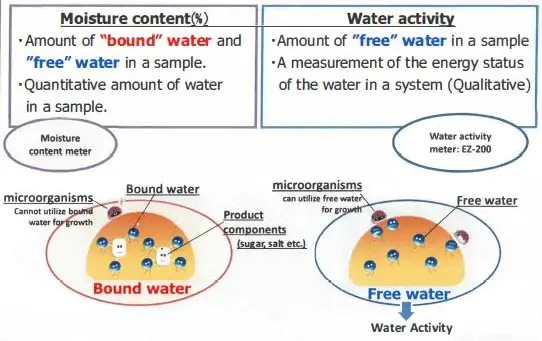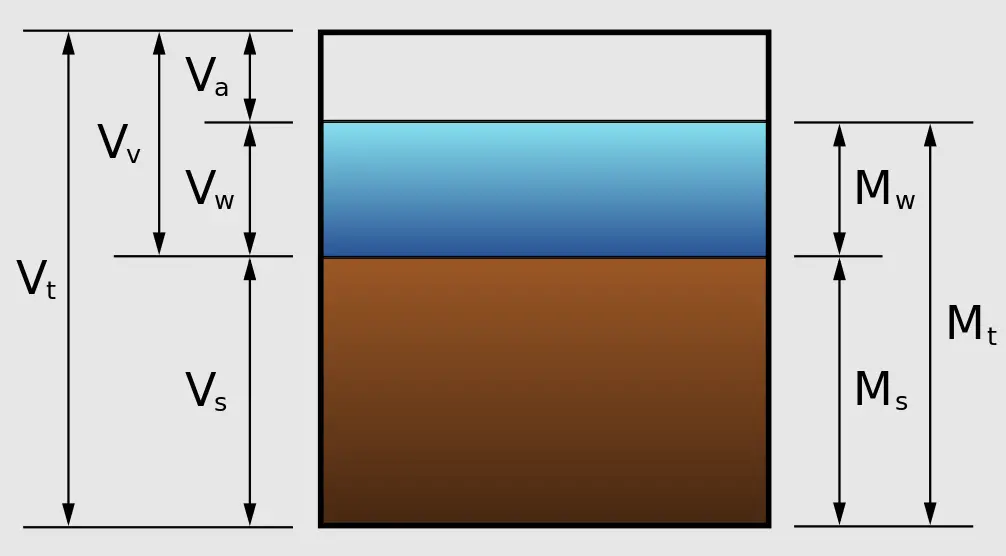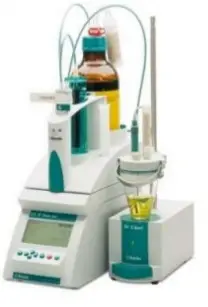Moisture content and water content are two critical metrics frequently confused in various scientific and industrial contexts. Each serves a unique purpose and is crucial for assessing material conditions in different sectors. Whether checking the dryness of building materials or the usability of agricultural soils, understanding these terms is essential.
Moisture content refers to the total amount of water held within a material, expressed as a percentage of the material’s dry weight. Water content, on the other hand, measures the volume of water in a material compared to its total volume. This distinction is fundamental for industries that rely on precise hydration measurements to ensure product quality and safety.
Both terms play significant roles across multiple fields, impacting decisions from the planning phase of a construction project to the daily management of agricultural activities. Accurate measurement and control of moisture and water content can prevent structural failures, promote agricultural yield, and ensure the longevity and safety of various products.

Basic Concepts
Moisture Content
Definition
Moisture content is a measure of the amount of water contained within a substance, relative to its total weight. This figure is typically represented as a percentage. It is a critical indicator in many industries as it affects the processing, quality, and shelf life of various materials and products.
How It Is Measured
To measure moisture content, the most common method involves the loss on drying technique, which entails:
- Weighing the sample before drying.
- Drying the sample in an oven until it reaches a constant weight.
- Weighing the dried sample again.
- Calculating the moisture content using the difference in weights before and after drying.
Other methods include the Karl Fischer titration for precision in chemical substances and infrared sensors for rapid on-line measurements.
Water Content
Definition
Water content is the measure of the volume of water within a substance compared to the total volume of the substance, including the water. This metric is crucial in fields such as geology and soil science, where water presence significantly influences the behavior of the material.
Measurement Techniques
Measuring water content can vary depending on the material, but some of the widely used methods include:
- Gravimetric determination, where the sample is weighed, dried, and weighed again.
- Neutron moisture gauges that detect the hydrogen atoms of water using neutron scattering.
- Time Domain Reflectometry (TDR), which utilizes the dielectric constant of water to measure moisture in soils.
Key Differences
Measurement Methods
Different tools and technologies are employed to measure moisture content and water content:
- Balances and ovens are traditional for determining moisture by weight loss.
- Spectroscopy and electrical resistance tools offer non-destructive testing options for on-the-go measurements.
Tools and Technology Used
The choice of tools depends largely on the accuracy required and the nature of the material:
- Laboratory scales and thermal dryers are precise but time-consuming.
- Microwave moisture analyzers provide rapid moisture measurements with moderate accuracy.
- Capacitance meters are used in field conditions, particularly in soil moisture assessment.
Impact on Materials
Influence on Physical Properties
Moisture and water content have significant impacts on the physical properties of materials:
- In construction, moisture content affects the curing of concrete and the durability of building materials.
- In soils, water content influences compaction, permeability, and workability.
Applicability
Industries Relying on These Metrics
Several industries depend heavily on accurate measurement of moisture and water content:
- Pharmaceuticals ensure drug stability and efficacy.
- Food production requires specific moisture levels for safety and quality.
- Agriculture uses soil moisture data for irrigation management.
Practical Examples
Construction Industry
Relevance and Effects
In the construction industry, monitoring moisture content is essential for:
- Ensuring that concrete and wood materials are at optimal moisture levels to prevent structural failures due to excess moisture or dryness.
- Regulating the drying times and conditions for paints and coatings.
Agriculture
Importance in Soil Management
Soil water content is critical in agriculture for:
- Determining irrigation schedules to optimize water usage.
- Influencing crop yield by managing soil conditions that affect root growth and nutrient uptake.
Food Processing
Role in Quality and Safety
In food processing, controlling moisture content is vital for:
- Preventing microbial growth and ensuring food safety.
- Achieving desired qualities in products like baked goods and dried foods where specific moisture levels are critical for texture and longevity.

Measurement Challenges
Accuracy Issues
When measuring moisture and water content, achieving high accuracy can be fraught with challenges. Variability in measurement methods and the inherent properties of different materials can significantly affect the results. Some common issues include:
- Calibration errors: Instruments must be correctly calibrated according to specific standards, and calibration drift over time can lead to inaccurate readings.
- Sample heterogeneity: Variations within a sample, such as uneven distribution of moisture, can cause discrepancies in measurement results.
Common Pitfalls
Practitioners often encounter several pitfalls that can skew the accuracy of moisture and water content measurements:
- Improper sample preparation: If samples are not prepared consistently, such as being chopped to different sizes or not mixed thoroughly, this can affect the moisture distribution and the accuracy of the results.
- Instrument sensitivity: Some devices may not detect small but critical changes in moisture content, leading to oversight of significant data.
Environmental Factors
Effects on Readings
Environmental conditions play a crucial role in the accuracy of moisture and water content measurements. Factors such as temperature, humidity, and atmospheric pressure can alter the state of a sample or the functionality of measuring equipment. Key impacts include:
- Temperature fluctuations: High temperatures can cause moisture to evaporate from the sample, while cold conditions can condense moisture in or on the sample.
- Humidity levels: Ambient humidity can lead to condensation or absorption of moisture by the sample, altering its water content before or during measurement.
Advanced Topics
Scientific Research
Recent Studies and Findings
Recent advancements in scientific research have shed light on more precise and efficient methods for measuring moisture and water content. Studies have explored:
- Molecular absorption techniques: These methods involve analyzing the specific wavelengths absorbed by water molecules, providing highly accurate moisture readings.
- Nuclear magnetic resonance (NMR): NMR has been refined to measure the water content in porous materials by detecting the signals from hydrogen atoms in water molecules.
Technological Innovations
New Methods in Moisture and Water Measurement
Technological innovations continue to push the boundaries of what is possible in moisture and water content measurement. Some of the latest developments include:
- Wireless sensor networks: These are used particularly in agriculture to provide real-time soil moisture data across vast fields, enabling precise irrigation management.
- Thermal imaging cameras: These cameras can visually represent moisture content in building materials, detecting issues like leaks and water accumulation without direct contact with the surfaces.
FAQs
What is moisture content?
Moisture content is the quantity of water contained in a material, expressed as a percentage of the material’s total dry weight. It is a critical parameter in fields such as construction and woodworking, where the material’s dryness affects its strength and stability.
How is water content measured?
Water content is typically measured by calculating the ratio of the weight of water in a sample to the overall weight of the sample, including the water. This measurement is crucial in soil science and geology, where water content affects soil behavior and stability.
Why is distinguishing between moisture and water content important?
Distinguishing between these two measurements is vital for applying the correct testing methods and ensuring the accuracy of the data, which is crucial for the material’s intended use. For example, incorrect moisture levels in concrete can lead to compromised structural integrity.
Can moisture content exceed 100%?
Yes, moisture content can exceed 100%, particularly in materials that weigh less than the water they absorb. This scenario is common in porous materials that can hold large amounts of water relative to their dry weight.
Conclusion
In conclusion, the difference between moisture content and water content, while subtle, has substantial implications across a range of industries. Recognizing and accurately measuring these differences is crucial for quality control, safety, and efficiency. The methodologies and instruments used for these measurements must be chosen carefully to suit the specific requirements of the material and its context.
As industries continue to evolve and new materials and technologies emerge, the importance of precise and accurate measurement techniques remains a cornerstone of industrial, environmental, and agricultural success. Understanding these key parameters helps professionals avoid costly errors and optimize their operations for better outcomes.

